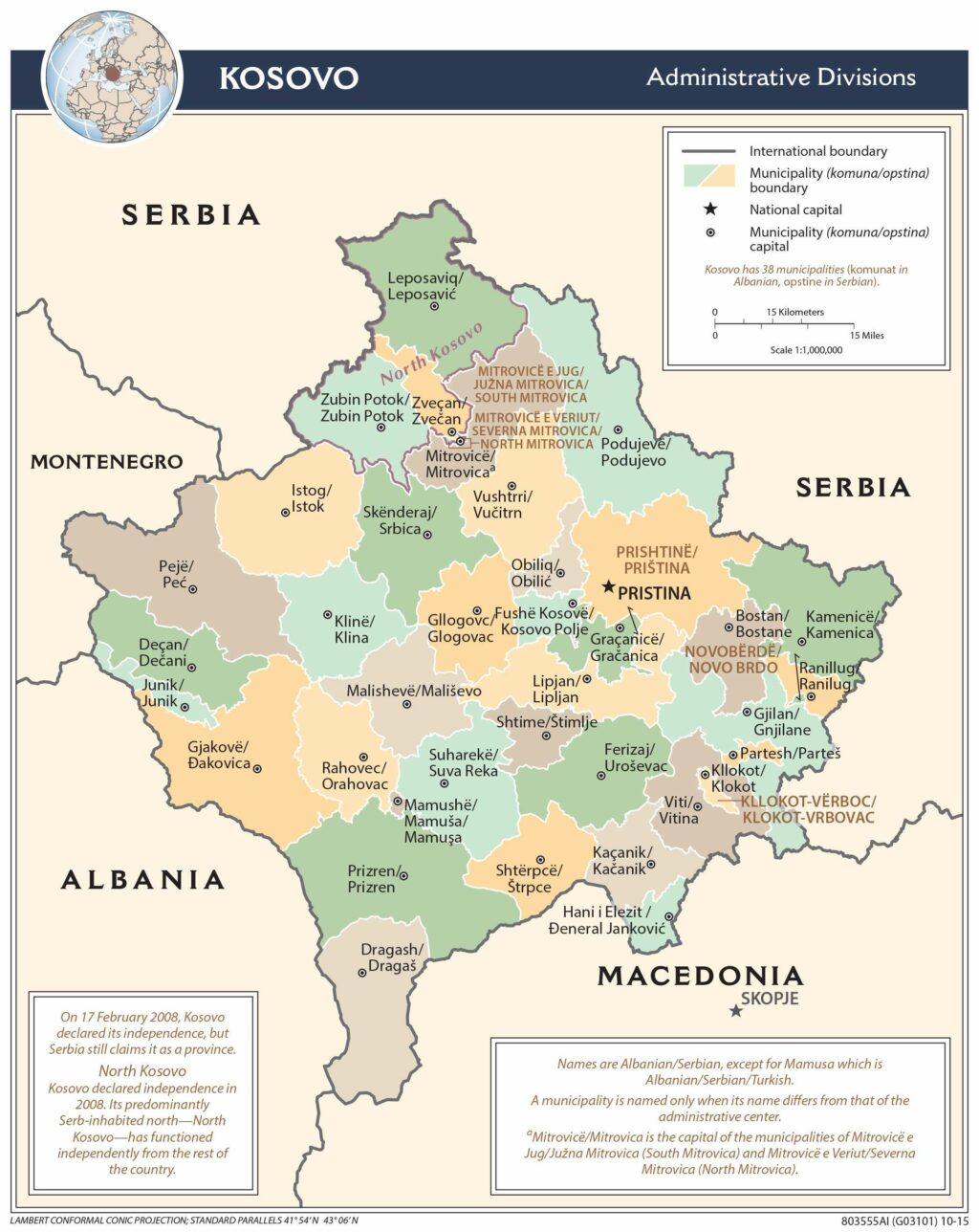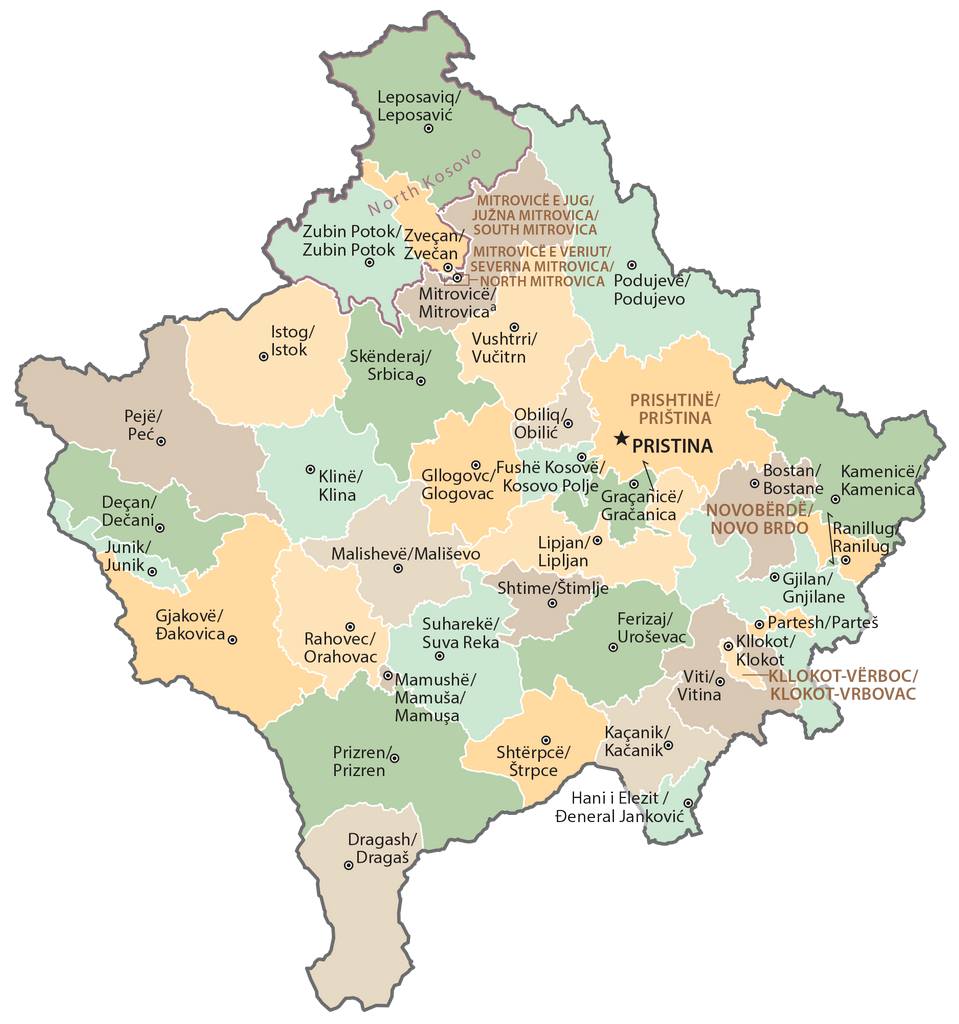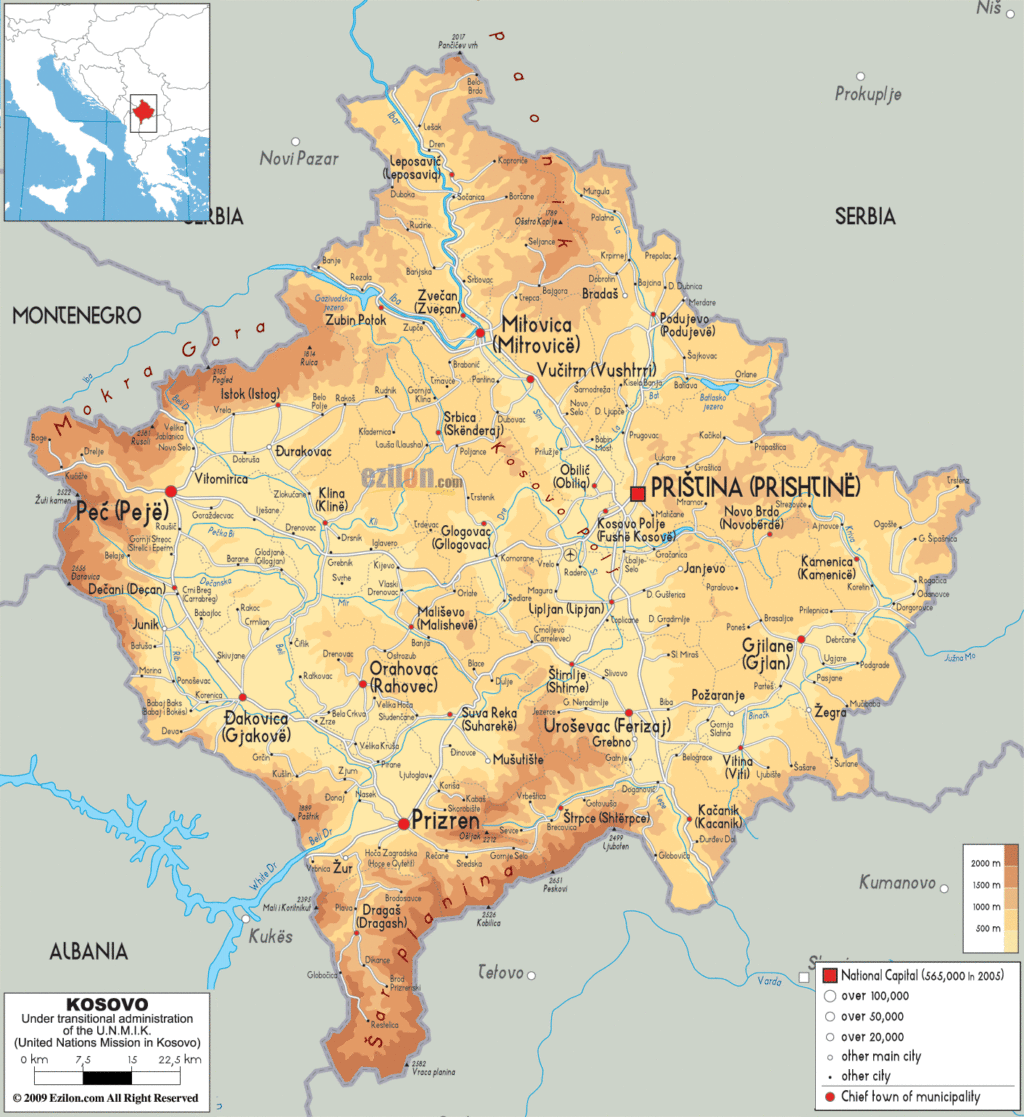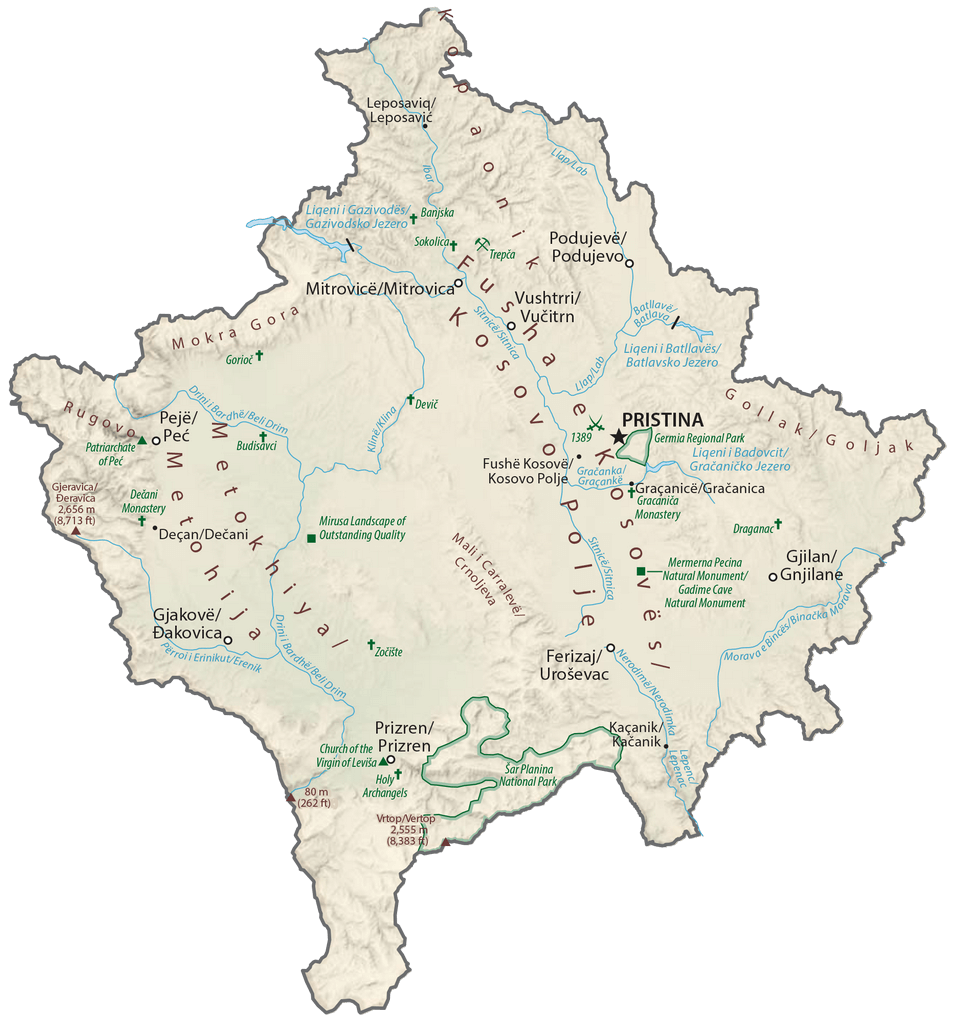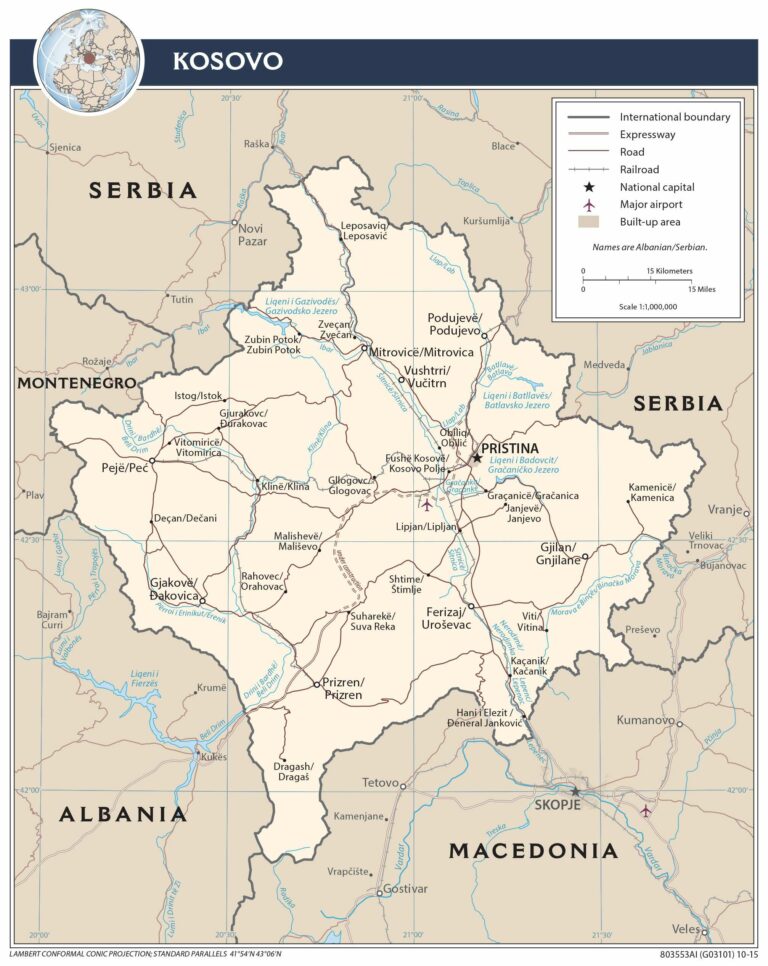Kosovo (Albanian: Kosova [kɔˈsɔva] or Kosovë [kɔˈsɔvə]; Serbian Cyrillic: Косово [kôsoʋo]), officially the Republic of Kosovo (Albanian: Republika e Kosovës; Serbian: Република Косово, romanized: Republika Kosovo), is a partially recognised state in Southeast Europe. It lies at the centre of the Balkans. Kosovo unilaterally declared its independence from Serbia on 17 February 2008, and has since gained diplomatic recognition as a sovereign state by 101 member states of the United Nations. It is bordered by Serbia to the north and east, North Macedonia to the southeast, Albania to the southwest, and Montenegro to the west. Most of central Kosovo is dominated by the vast plains and fields of Metohija and Kosovo field. The Accursed Mountains and Šar Mountains rise in the southwest and southeast, respectively. Its capital and largest city is Pristina.
In classical antiquity, the central tribe which emerged in the territory of Kosovo were the Dardani, who formed an independent polity known as the Kingdom of Dardania in the 4th century BC. It was annexed by the Roman Empire by the 1st century BC, and for the next millennium, the territory remained part of the Byzantine Empire, whose rule was eroded by Slavic invasions beginning in the 6th–7th century AD. In the centuries thereafter, control of the area alternated between the Byzantines and the First Bulgarian Empire. By the 13th century, Kosovo became the core of the Serbian medieval state, and has also been the seat of the Serbian Orthodox Church from the 14th century, when its status was upgraded to a patriarchate. Ottoman expansion in the Balkans in the late 14th and 15th century led to the decline and fall of the Serbian Empire; the Battle of Kosovo of 1389 is considered to be one of the defining moments in Serbian medieval history. The Ottomans fully conquered the region after the Second Battle of Kosovo. The Ottoman Empire ruled the area for almost five centuries until 1912.
In the late 19th century, Kosovo was the center of the Albanian National Movement and where the Albanian revolt of 1910 and Albanian revolt of 1912 took place. Following their defeat in the Balkan Wars, the Ottomans ceded Kosovo to Serbia and Montenegro. Both countries joined Yugoslavia after World War I, and following a period of Yugoslav unitarism in the Kingdom, the post-World War II Yugoslav constitution established the Autonomous Province of Kosovo and Metohija within the Yugoslav constituent republic of Serbia. Tensions between Kosovo’s Albanian and Serb communities simmered through the 20th century and occasionally erupted into major violence, culminating in the Kosovo War of 1998 and 1999, which resulted in the withdrawal of the Yugoslav army, and the establishment of the United Nations Interim Administration Mission in Kosovo. Ultimately, Kosovo unilaterally declared its independence from Serbia on 17 February 2008, and has since gained diplomatic recognition as a sovereign state by 101 member states of the United Nations. Serbia does not officially recognise Kosovo as a sovereign state and continues to claim it as its constituent Autonomous Province of Kosovo and Metohija, although it accepts the governing authority of the Kosovo institutions as a part of the 2013 Brussels Agreement.
Kosovo is a developing country, with an upper-middle-income economy. It has experienced solid economic growth over the last decade as measured by international financial institutions since the onset of the financial crisis of 2007–2008. Kosovo is a member of the International Monetary Fund, World Bank, and has applied for membership in the Council of Europe, UNESCO, Interpol, and for observer status in the Organisation of Islamic Cooperation. In December 2022, Kosovo filed a formal application to become a member of the European Union.
Explore Kosovo’s diverse landscape with this interactive map. Zoom in to find major cities, towns, roads, lakes, rivers, and topography like plains and mountainous areas. Discover the beauty of Kosovo and its unique geography.
Online Interactive Political Map
Click on ![]() to view map in "full screen" mode.
to view map in "full screen" mode.
Location Maps
Where is Kosovo?
Kosovo is a landlocked country in Southeastern Europe, located at the center of the Balkans. The majority of the population is Albanian, with a significant minority of Serbs. The official languages are Albanian and Serbian.
It borders four other countries including Serbia to the north, Montenegro to the west, Albania to the southwest, and North Macedonia to the southeast.
It has been recognized as a nation since 2008 when it declared its independence from Serbia. Pristina is the capital and largest city of Kosovo. Other major cities are Prizren, Gjilan, and Peja.





